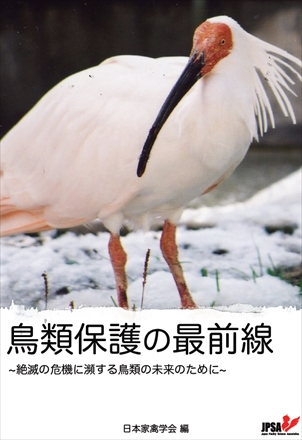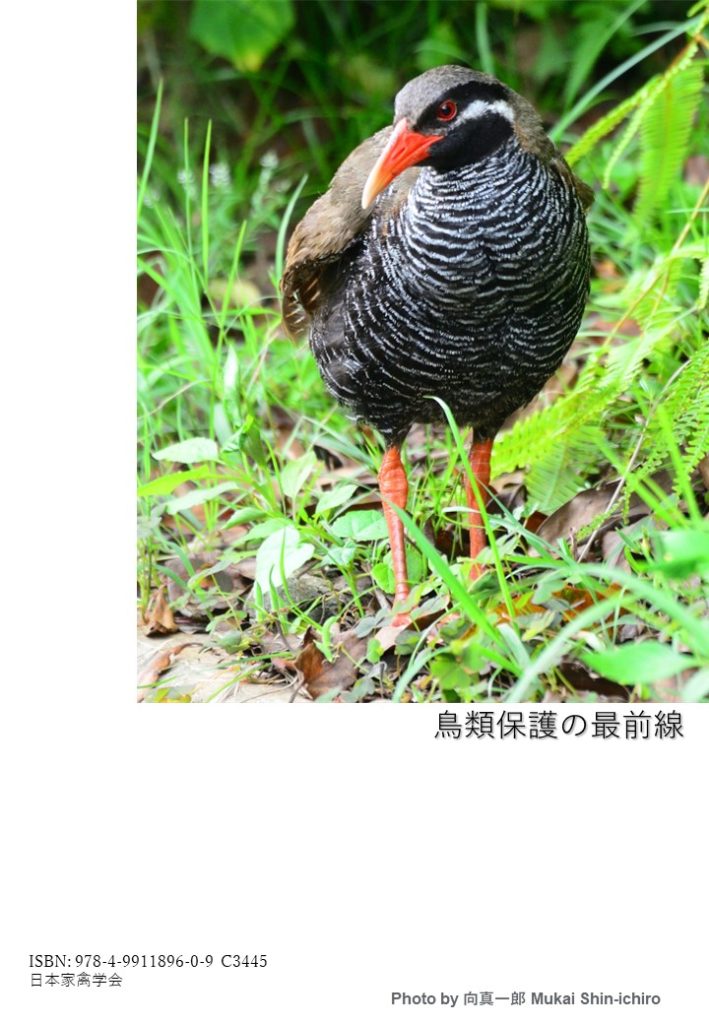Foreword
Publishing Forefront of Avian Conservation: For the future of endangered birds
Atsushi Tajima
Here, the Japan Poultry Science Association has re-organized into one volume the series “Avian Conservation Now!”, which was published 11 times in the Japanese Journal of Poultry Science (Japanese-language journal) from Vol. 51, Issue J2 (published on October 25, 2014) to Vol. 57, Issue J1 (published on April 25, 2020), and published it as “Forefront of Avian Conservation: For the future of endangered birds”.

The series “Avian Conservation Now!”, which is the basis of this book, was started when I met Kazuo Kobayashi, who was working at the Ueno Zoo during my participation in the Okinawa rail (Hypotaenidia okinawae) captive breeding project of the Ministry of the Environment of Japan in 2013, in Okinawa and discussed techniques and innovations of bird breeding at the Ueno Zoo from various perspectives.
The field of poultry today mainly targets domesticated birds, and I had little contact with wild birds up to this point. However, as I listened from Mr. Kobayashi about the ecology and habits of various wild birds that were bred in the Zoo, I felt that learning about the physiology and ecology of wild birds, which have large differences between species, would allow us to recognize once again the essence of birds that have been selected and bred while prioritizing economic efficiency and which have become difficult to observe in poultry that are bred and managed in a highly controlled environment.
At the time, I was the editor-in-chief of the Japan Poultry Science Association and had given thought to planning a Japanese-language journal. To that end, when I proposed to the editorial committee the serialization of articles on the captivity and breeding of wild birds in zoos, my proposal was approved, and this project was materialized.
That being said, even if materialized, I have no good connections in this area, so I asked Mr. Kobayashi to introduce me to people who are involved in bird breeding practices at zoos and facilities throughout the country, and I requested their contributions in writing manuscripts for this series.
This 11-part series of “Avian Conservation Now!” has been concluded for the time being, but I had received suggestions from many people that, given the magnitude of the undertaking, I should compile this into a single book. Therefore, we have decided to publish this as a separate book after making some additions and revisions in some manuscripts.
Last but not least, I would like to take this opportunity to thank Mr. Kazuo Kobayashi for his full cooperation in the realization of this project, and all the authors who prepared their manuscripts despite their busy schedules.
Publishing Forefront of Avian Conservation: For the future of endangered birds
Kazuo Kobayashi
 Many animals worldwide are facing the risk of extinction. It would be ideal if we could restore the environment to one in which wild animals can live safely. However, the rate of extinction of wild animals is extremely high, and waiting for the restoration of a safe environment is certainly not enough. Birds are no exception, and active efforts have been implemented to breed them in captivity at zoos and other sites in order to avoid their extinction.
Many animals worldwide are facing the risk of extinction. It would be ideal if we could restore the environment to one in which wild animals can live safely. However, the rate of extinction of wild animals is extremely high, and waiting for the restoration of a safe environment is certainly not enough. Birds are no exception, and active efforts have been implemented to breed them in captivity at zoos and other sites in order to avoid their extinction.
The captive breeding of wild birds began with the experience of skilled zookeepers, but their methods and procedures have changed significantly over the past several decades. Specifically, they utilize equipment such as incubators; improve feed and the breeding environment; introduce new technologies such as PCR method-based gene analysis, hormone dynamics analysis, and advanced PC-based analytical programs for use in breeding and pedigree management; and actively promote cooperation between domestic and international zoos.
Captive breeding of endangered species began with the intent of “increasing numbers above all”, but once the hurdle of breeding is overcome and population numbers increase, new issues began to emerge such as clarifying the role of such actions among conservation activities overall. After various studies, captive breeding for conservation today is not regarded as “ex-situ conservation”, and the roles of captive breeding populations are positioned as the following items. (1) Emergency-evacuated individuals facing the imminent threat of extinction. (2) Individuals returned to the wild once their habitat environment is restored. (3) Various data that are obtained through captivity are collected and analyzed for utilization in habitat protection measures. (4) Communication of the current status and protection of birds through live exhibits of endangered birds. Captive breeding efforts are underway at zoos with the above items as objectives.
It is becoming increasingly important to collaborate with universities, research institutions, and NPOs that work on bird research and field conservation in order to save even more birds from extinction. The crested ibis in the cover photograph is the last individual from Japan called “Kin-chan”, but since its death in 2003, crested ibises have gone extinct in Japan. We must make efforts in order to avoid repetition of the “Kin-chan” case in the future.
I would like to thank the Japan Poultry Science Association for giving me the opportunity to introduce at least some of the wild bird conservation efforts at zoos through the Journal’s series and this book.

